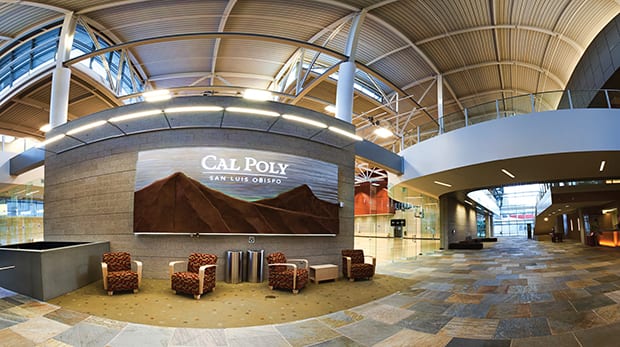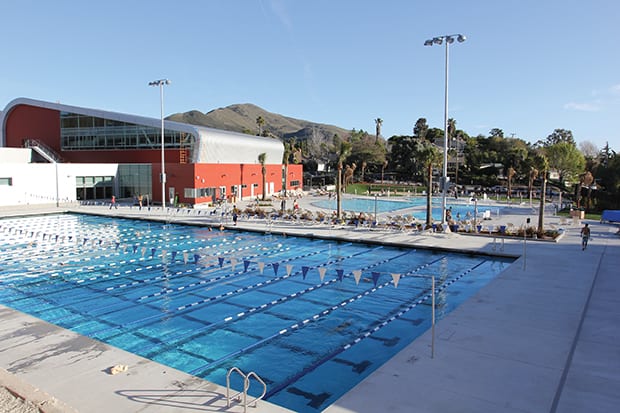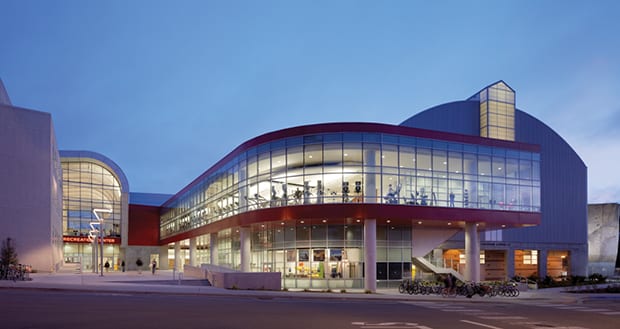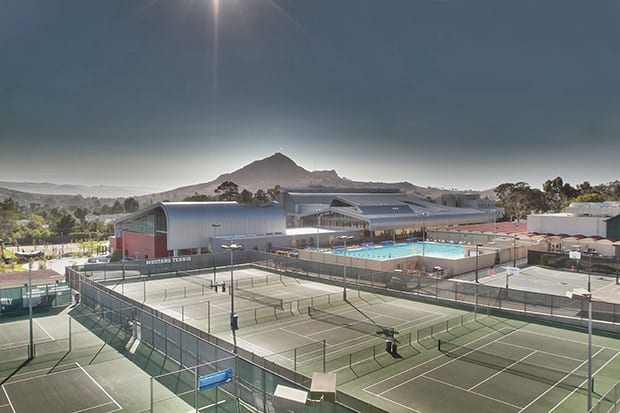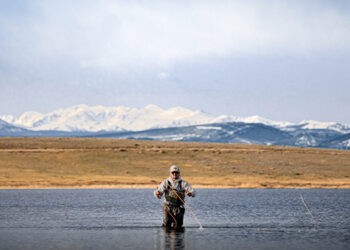It seems as though the industry of campus recreation is a competition, an on-going battle to see who has the best facility. Millions of dollars each year go into extensive renovation and expansion projects. But with all the dust, debris and disruption, renovations can be a serious undertaking.
After completing various renovation and expansion projects, a few recreation professionals share their advice.
It’s all about the students
As with any business, it is essential to cater to the needs of your customers. In the case of campus recreation centers, the students, faculty and staff are your clients. Therefore, prior to starting any renovation project, it is crucial to get as much input from the campus community.
Focusing on student feedback played a major role in the development of the California Polytechnic State University (Cal Poly) Recreation Center when they began renovations in 2009.
“One of the main focuses of our expansion that the students were expressing was more open space,” said Greg Avakain, the director of recreational services. “Our original rec center was a couple of gym courts, a fitness studio, a weight room and your traditional 1980s version locker room. With the trends, it was about how we make this facility a destination, not just a gym.”
Jason Vlastaras, the assistant director of fitness at Oklahoma State University, agrees that everything comes down to the students. When patrons at the recreation center were forced to perform certain exercises in hallways, the recreation department decided it was time to make a change.
“There was a need to create more open spaces for our students and our participants to perform things that were along the lines of current trends of explosive, dynamic training, Olympic weightlifting, speed and agility training, etc.,” said Vlastaras. “All of these modalities were being performed in hallways and in the weight room. People were doing box jumps and throwing medicine balls in places that weren’t necessarily appropriate.”
The bottom line: Don’t make assumptions about what is needed. Instead take notice of what’s going on in your facility and ask for student input.
Space, Space, Space
Gone are the days when an exceptional facility means packing in as much equipment as possible. Today, space is the name of the game. Avakain explained during the construction process at Cal Poly, incorporating more usable, flexible space was a priority.
“We reconstructed one fitness studio and made it into three,” explained Avakain. “That was a way to have more flexibility and we can now rotate different classes at one time. Now we are able to offer 80 different time slots and spread them through three different studios. Then we really expanded the fitness exercise room space. We went from around 7,000 square feet to a little bit over 20,000 square feet.”
In order to incorporate current fitness trends such as interval training and weightlifting, Oklahoma State University repurposed underused racquetball courts into a performance center. The new space integrates traditional strength training equipment such as squat racks, indoor turf, lifting platforms, a multipurpose rig and a full array of loose equipment ranging from boxes and kettlebells to medicine balls and battle ropes.
“The space emphasizes performance training in general, but has a lot of open space to do things like Olympic weightlifting, kettlebell training, TRX, plyometrics and much more,” said Vlastaras. “It was built with the downstairs floor being open to the general participants and then we actually created a personal training studio upstairs to accommodate the large rise in personal training we were seeing.”
Consult with others
With over 2,000 colleges and universities across the U.S., there is an endless resource of inspiration and creative ideas. When brainstorming concepts for recreation center renovations, consider visiting other campuses.
“I would tour as many facilities as possible,” explained Avakain. “We went up and down the state of California looking at various facilities. We would pop into anything we could, if it was a university setting to a private fitness club. We looked at hotel lobbies. We used convention centers, airports, anything that could help us.”
Vlastaras also suggested taking advantage of all the resources the campus recreation community has to offer. “Learn as much as you can personally, but also surround yourself with experts,” he added. “I think the best part about campus recreation is what a tight knit community we are, so reach out to anyone who has gone through the process. Utilize that close network we have across the nation of campus rec professionals.”
Stay focused on your mission
As with any renovation project, it can be easy to go over board when it comes to budgets. Have a clear objective and stick with it. Develop a timeline and while there might be some hiccups, do your best to stay on schedule.
“Really go in opened-minded and then have that vision of what you want to stick with, because when the architects and contractors start to talk about money, you want to stay focused,” said Avakain. “We really kept focused on the non-intimidating, open environment with a flow so you could see a lot of activity without having that intimidation factor of a traditional weight room. We really wanted to have more of a community feel.”





